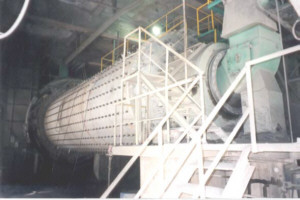Introduction to Concrete | Analysis of CaCO3 | Concrete Affects History | Industrial Development | Calcium Carbonate Accomplishments | Damage | History Affects CaCO3: Future of Concrete
In the world of construction, one material is used above all others: concrete. Concrete is absolutely indespensible in modern society’s fascination with new roads, buildings and other constructions. One industry expert has gone as far as to say that now “concrete IS chemistry.” This is due to the increasing development of admixtures which chemically affect certain properties of concrete. -Simon Davies The Chemistry of Concrete
-
The three basic ingredients of concrete are aggregate, cement, water. Cement is the fixture that binds the ingredients together, water gives the concrete viscocity in order to be molded and react with the ingredients, and the aggregates are what adds bulk to the concrete, but are not involved in the chemical processes.
-
Cement, the building block of concrete is composed of innumerable, natural occuring elements, earthly compounds, and alkali metals: among them is Calcuim Carbonate. The cement mixture is created by crushing up clay and limestone together and roasting it in a kiln.
The formed powder typically has a similar chemistry to the following:
75% Di, Tri- calcium silicate
10% Tetracalcium aluminoferrite
10% Tricalcium aluminate
10% Gypsum or Hydrated calcium suphate
- Calcium Carbonate serves as a general term referring to the limestone base that is quarried from mines in order to complete the mixture, and is especially important.
- Some other common materials found in finished Concrete are chalks, marbles, oyster shell, shale, clay, slags, fly ash, bauxite, alumina process waste, and granite, silica sand, iron ores, blast furnace flue dusts, pyrite clinker, and mill scale. CaCO3 is present in most. -Charles Kubach, Mineral Processing Engineer, Sepor Inc.
http://chemistry.suite101.com/article.cfm/the_chemistry_of_concrete


